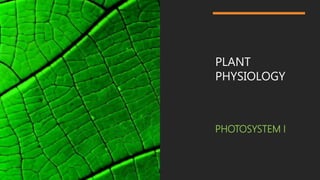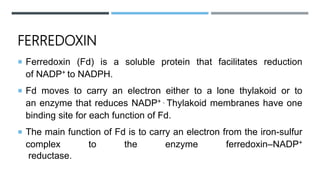Photosystems are crucial units in photosynthesis that absorb light and facilitate energy and electron transfer in chloroplasts. Each photosystem consists of an antenna complex that captures light and a reaction center where light energy is converted to chemical energy. Photosystem I specifically transfers electrons from plastocyanin to ferredoxin, producing NADPH, with its function dependent on various protein complexes and pigment molecules.























